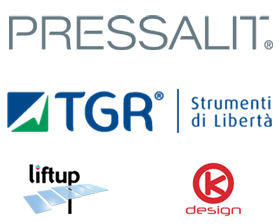
Accessibility in public transportation is not just a legal requirement—it is a necessity for creating an inclusive society. Millions of visually impaired individuals around the world rely on transportation systems like airports, metro stations, and railway networks to travel independently. One of the most effective solutions to improve accessibility is Braille signage. It allows visually impaired passengers to navigate, find directions, and use facilities safely.
Why Braille Signage is Important in Transportation
Braille signage provides tactile information that empowers visually impaired travelers to:
- Identify platforms, gates, and terminals.
- Locate essential facilities like restrooms, ticket counters, elevators, and exits.
- Read emergency instructions in case of accidents or fire.
- Travel independently without constantly depending on assistance.
Without Braille signage, transportation hubs can become confusing and even dangerous for those with visual impairments.
Braille Signage in Airports
Airports are large, complex spaces with multiple terminals, gates, and facilities. For visually impaired passengers, finding their way around without clear guidance is extremely challenging.
- Check-in and Boarding Areas: Braille signs help locate check-in counters, boarding gates, and baggage claim areas.
- Restrooms and Lounges: Accessible restrooms and lounges with Braille signage improve comfort and independence.
- Emergency Exits: Clear Braille labeling ensures safety during emergencies.
By incorporating Braille signage, airports can offer equal accessibility and align with global standards of inclusivity.
Braille Signage in Metro Stations
Metros are one of the busiest and fastest modes of transport in urban areas. Braille signage ensures that visually impaired commuters can travel confidently and safely.
- Platform Indicators: Braille helps passengers find the correct platform and train line.
- Ticket Machines and Counters: Adding Braille instructions makes ticketing easier.
- Stairways and Elevators: Braille signs direct passengers to lifts, escalators, and emergency exits.
Some metro systems also integrate tactile flooring with Braille signage, providing an added layer of navigation support.
Braille Signage in Railway Stations
Railway stations are often crowded, with multiple tracks and platforms. Without clear guidance, the visually impaired face risks of accidents.
- Platform Numbers: Braille signage helps identify platforms and waiting areas.
- Coach Position Information: Braille signs on boarding areas can guide passengers to the correct train coach.
- Public Facilities: Restrooms, ticket counters, and waiting halls should always include Braille.
Integrating Braille signage in railway stations ensures that long-distance travel is accessible to everyone.
Benefits of Braille Signage in Transportation Hubs
- Safety – Reduces risks of accidents and confusion.
- Independence – Enables visually impaired travelers to navigate on their own.
- Inclusivity – Promotes equal access to transportation facilities.
- Legal Compliance – Meets global accessibility regulations such as ADA and ISO standards.
- Improved Reputation – Shows commitment to social responsibility and inclusivity.
Challenges in Implementing Braille Signage
While the benefits are clear, some transportation authorities face challenges such as:
- Lack of awareness about accessibility needs.
- Poor maintenance of Braille signs (fading, damage, or incorrect placement).
- Insufficient integration with digital accessibility tools like audio announcements.
To overcome these, regular audits, proper staff training, and collaboration with disability organizations are essential.
The Future of Braille Signage in Transportation
The future lies in combining Braille signage with smart technologies. For example:
- Braille with QR codes that provide audio navigation through smartphones.
- Tactile maps at entrances to guide passengers across large spaces.
- AI-powered navigation systems integrated with Braille for enhanced accessibility.
This hybrid approach can revolutionize travel for visually impaired passengers.
Conclusion
Transportation hubs like airports, metro stations, and railway stations are essential for daily commuting and long-distance travel. Braille signage ensures that visually impaired individuals can navigate these spaces with safety, confidence, and independence. By investing in accessible infrastructure, transportation authorities not only comply with legal requirements but also build a society where everyone has equal opportunities to travel.









